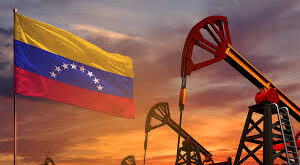The volume of natural gas imported into the European Union fell by over 11 percent in the first quarter of 2024 compared to the same three-month period a year ago, while the value was more than halved, official figures showed.
“The significant decrease in value reflected the declining prices of natural gas after the price surge in 2022, while the decrease in volume should be seen in the context of the EU reduction plan, where EU countries committed to reducing their gas consumption by at least 15 percent”, the European Commission said in a statement.
Under the reduction plan, member states voluntarily curb their consumption to secure reserves in response to what the EU called a weaponization of energy supplies by Russia. It initially covered August 2022 to March 2023 but was extended to March 2024.
Gas in gaseous state imported into the 27-member bloc dropped 11.7 percent in volume in January–March 2024 against the first quarter of 2023, while the value decreased 56.8 percent, according to Eurostat data.
EU imports of liquefied natural gas (LNG) declined 11.4 percent in volume and 54.1 percent in value in the first quarter of 2024 against the corresponding period a year ago.
The monthly average of imported gas in gaseous state in the first quarter of 2024 fell 9.8 percent in volume and 41.3 percent in value year-over-year. That of LNG fell 14.5 percent in volume and 35.9 percent in value.
Norway was the top source of gas in gaseous state imported into the EU in the first quarter of 2024, accounting for 46.6 percent. Continental Europe has four receiving terminals for Norwegian pipeline gas: two in Germany, one in Belgium and one in France. The United Kingdom also has two receiving terminals for pipeline gas from the Nordic country.
Norway was followed by Algeria (19.7 percent) and Russia (17.3 percent).
For LNG, the U.S. remained the EU’s biggest supplier, constituting 47.4 percent of imports in the first quarter. It was followed by Russia (17.7 percent) and Algeria (9.9 percent).
While gas imports fell, EU petroleum imports remained “stable” in the first quarter of 2024 compared to the first quarter of 2023. The volume slipped 0.9 percent but the value increased 0.4 percent year-on-year.
The monthly average of oil imports fell 1.2 percent in volume and 1.8 percent in value year-on-year.
Most foreign oils in the EU in the first quarter of 2024 were from the U.S., which accounted for 17.1 percent. The U.S. was followed by Norway (13.6 percent) and Kazakhstan (10.9 percent).

 Iran Energy News Oil, Gas, Petrochemical and Energy Field Specialized Channel
Iran Energy News Oil, Gas, Petrochemical and Energy Field Specialized Channel



